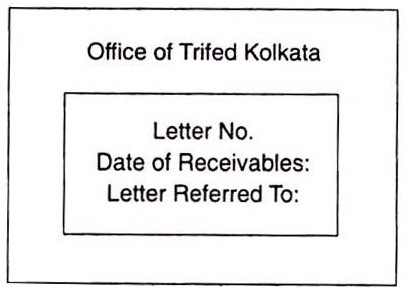Back to: BUSINESS STUDIES JSS2
Welcome to Class !!
We are eager to have you join us !!
In today’s Business Studies class, We will be discussing Office Correspondence. We hope you enjoy the class!

Office correspondence
A lot of communication that takes place in an organisation is in writing. Correspondence thus is defined as ‘communication in writing on the subject of mutual interest either within the organisation or with an outsider’.
Correspondence within the organisation lends a meaning of definiteness to corporate policies and practice, promotes understanding between the members and departments the organisation.
Purpose of office correspondence:
There can be and there are many reasons for office correspondences.
Office correspondence can be used because of the following reasons:
- Serving a notice to the office personnel.
- Serving a notice to the individual person.
- Serving an order either to the entire department or to the individual employee in the office.
- Serving an instruction either to the department or to an individual working in the department.
Serving an instruction or a notice to the office situated outside the office premises. There can be many other reasons to execute and serve an instruction which is a part of office correspondence, however, the nature of the correspondence depends upon the situation that arises in the office for which a notice has to be served.
Principles of office correspondence:
There are certain principles of correspondence which has to be followed by every office. An office notice or an official order cannot be issued by every tom, dick and harry. Suppose a departmental head wishes to issue a warning letter to one of its employees. He just cannot issue the same on his whims and fancies.
He has to first refer to the office manual wherein it will be clear to him whether the office has empowered the departmental head to issue such letters.
If yes, then he can, under the framework of the administrative manual, issue the letter. If not, he has to revert back to the organisational head, explaining the situation and seek his permission and approval to issue such order, before serving such a warning letter. A copy of that letter should be forwarded to the office organisation head for his information.
Maintenance of official correspondence:
Maintenance of the official correspondence starts either with receiving the official letter and filing them in the proper file, or sending a letter out of office, or sending a letter to some other department, and maintaining a copy of it in the file.
This is best explained thus:

Incoming letters are also known as incoming mails and the outward letters are known as outgoing mails. We shall discuss the procedure of handling inward mails and outward mails.
Procedure for handling inward mails in office correspondence:
Inward mail forms the basis on which the organisation works and exists. Much of the efficiency of the organisation is reflected through proper handling of inward mail.
Listed is the procedure of handling an inward mail:
- Receiving and collecting the mails:
An ordinary ‘mail’ is brought to the office either by a courier or by a post-man once or twice in a day in most offices. At once, the number of letters received should be counted. An office, as it is, will receive about 25 to 30 letters in a day and maybe 10 to 12 letters at a time.
All such letters after receiving should be stamped. A proper example of a stamp is shown:

Here the stamp reflects the name of the office. It is an office at Kolkata. The stamp reflects other information such as letter number, date of receipt, and the direction of the letter to whom it has to be handed. Suppose this is the 10th letter that the office has received on 10/10/10, then figure 10 and the date 10/10/10 should be posted at the appropriate place.
Lastly, if the letter is marked to the accounts department, then “accounts” should be written in the appropriate place. However, this step will take place only after opening the mail.
- Opening mail:
Letters may be opened either by hand or by letter opening machines. Opening letters by hand with the help of a paper-knife is the most common method of opening letters even in a very large organisation.
After opening the letter, it should be noted whether the contents of the letter written are on a single page or more than a page. If it is more than one page, the entire pages should be numbered.
After numbering the pages, the contents of the letter should be read and greater importance should be laid on the subject matter of the letter.
It is the subject matter which, at a glance, tells us about the entire contents.
Now it is here that the ‘letter referred to’ comes into foreplay as inscribed on the stamp. Once the entire letter is read, one would come to know about the department where the letter has to be directed. It should be written on the space provided.
- Recording of the mail:
Most of the organisations like to keep a permanent record for all inward mail. For this purpose, the “inward mail register” or ‘letter received book’ is maintained. This register records all the particulars of letters received. It is better to have such a register in almost all offices to check the records of the letter received and also check whether a letter has been returned for filing.
An example of how the inward mail register should be is best illustrated:

- Sorting and distribution of inward mail:
Once the entire stamping and entire recording is over, the letters should be sorted out. For example, all letters to be directed to accounts must be separated and grouped together so that every letter belonging to the accounts department are sent to accounts.
Similarly, every letter directed to administration may be sent to the administration department. Thus, the process of putting all the letters belonging to the accounts department are sent to the accounts. Similarly, every letter directed to administration may be sent to administration.
This process of putting all the letters to one department, in series and directing it to the concerned department for action is known as “sorting”. Once the letters are sorted and recorded, the letters are sent to the respective departments to receive. This process is known as distribution.
- Follow up:
Efficient reply back to incoming correspondence is the index of the efficiency of the organisation and to improve its image. The executives and the various departmental heads should see to it that letters received during the days are attended to on the same day and replies are prepared on the same day, and then the duplicate copies of it are filed properly.
The original letters should be given the file name and should be dispatched properly.
Outgoing or outward mail in office correspondence:
Mails are sent outside by every department, by every organisation.
There is a procedure of sending the mail out:
- Read the entire contents of the letter which has to be sent out.
- Take out the file in which the second copy of the letter will be filed. The file will have a file number. This file number has to be given to the letter.
- See in the outward register what the serial number of the last letter is. The next number will be the serial number of this letter.
- Put the date of despatch on the letter. The same date will have to be put on the letter.
We have come to the end of this class. We do hope you enjoyed the class?
Should you have any further question, feel free to ask in the comment section below and trust us to respond as soon as possible.
In our next class, we will be talking about Office Documents. We are very much eager to meet you there.

But the lesson was interesting 😍🥰😘😃🤩😜
the lesson was interesting
But the lesson was interesting 😍🥰😘😃🤩😜
I did not get what I want
But it is a very amazing , interesting and understanding class
I enjoyed and loved the class.It was so fun and interesting 😍🥺😘😚🥰🥰🤩🤩😍😍😍😍😍😍😍😍😍😍😍😍😍🤩🤩🤩🤩🤩🤩🤩🤩